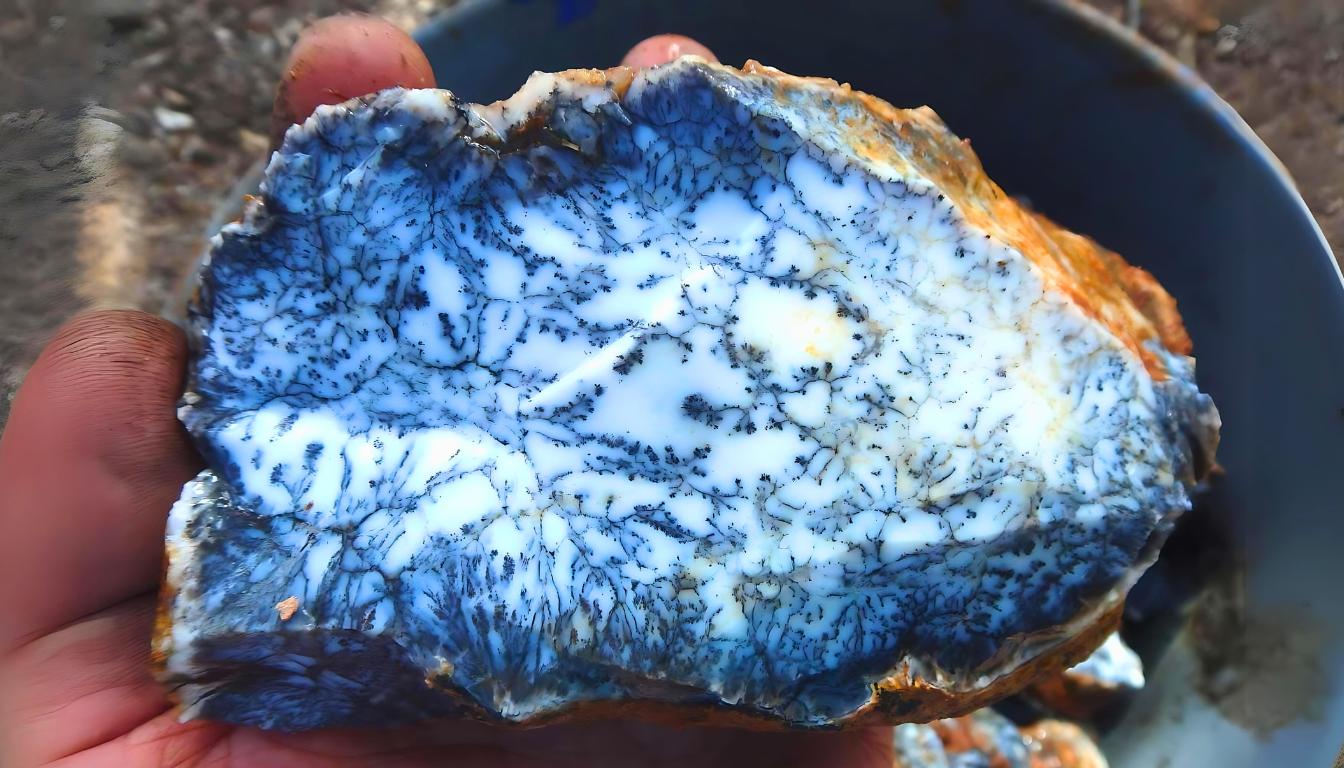Opals are known for their fire and brilliant light-reach play of color, but among all the varieties of opal dendritic opal is exceptional because of its appearance. Due to its striking resemblance to old tree branches or complex patterns of fern leaves dendritic opal pays much attention to collectors, jewelers, and mineral lovers. In this article, we will take a deep dive into dendritic opal, explain its background, features, varieties, and applications, and explain how to maintain dendritic opal.
There may be some types of gemstones that have dendritic on them, and gem lovers may come across such terms frequently. Another is dendritic, which is an opal with black veins that create fantastic patterns of small trees on the body of the gemstone. Opal and Opalite enthusiasts often find these patterns particularly fascinating, adding to the allure of these unique stones.
Table of Contents
In broad terms, what is a dendritic gemstone?
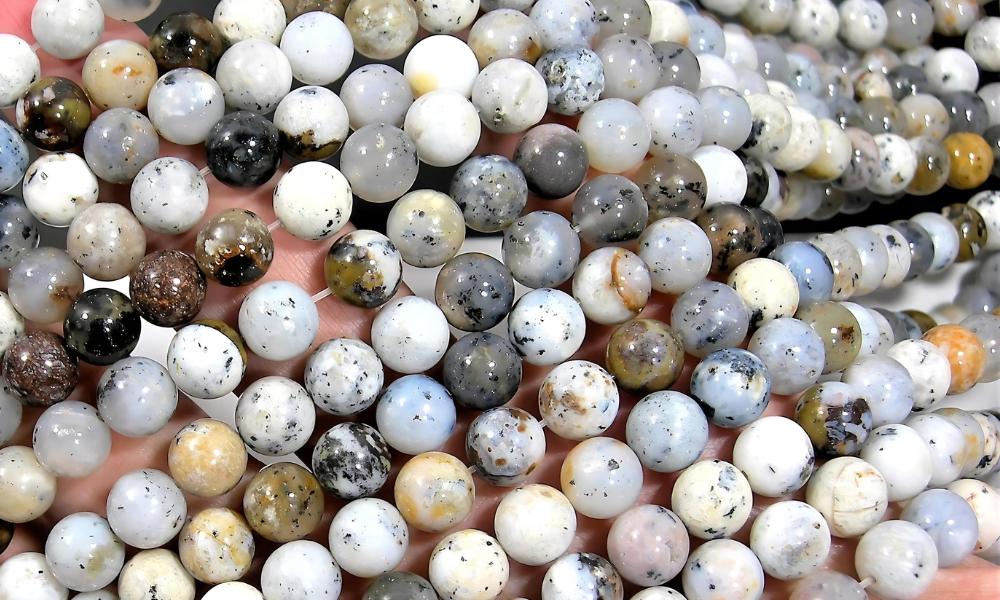
Dendrite is a common term used by biologists to refer to the branching structures in nerve cells through which messages are passed to other dendrites in neighboring cells over synapses. Dendrites are crystals and the term is used by gemologists to describe tree-like features on a gemstone or a rock. When opal or any gemstone is possessed of tree-like inclusion patterns, it will be referred to as a dendritic variety of the gemstone.
Dendritic opals are often used in spiritual communities and are regarded to have great magical potential in healing physical afflictions, as well as emotional and spiritual ones.
What is Dendritic Opal?
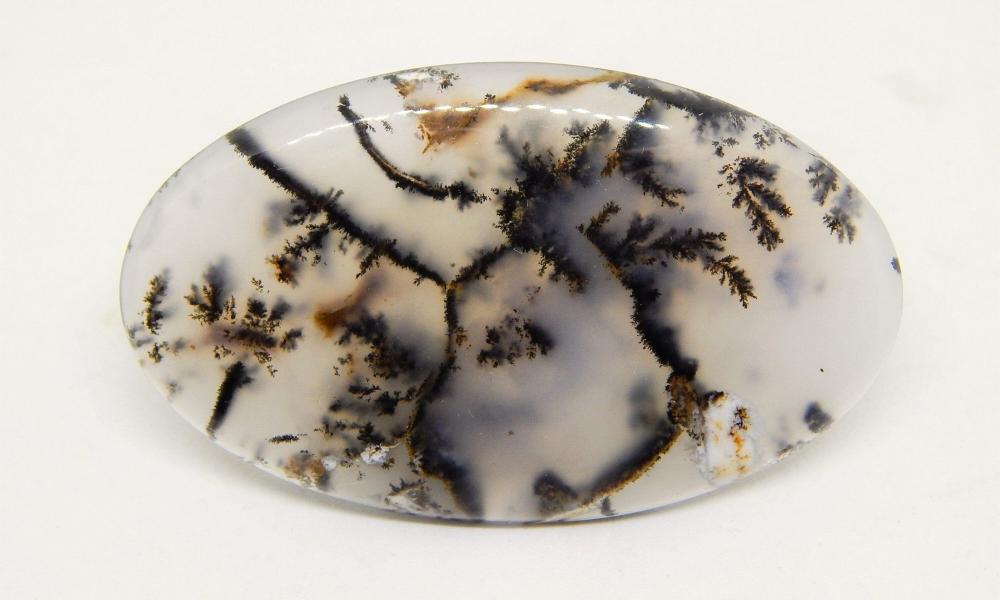
Dendritic opal is one of the opal types that features peculiar inclusions resembling trees’ branches or ferns, mosses, and the like. The inclusions in these opals are mostly made of manganese, iron, or some other mineral which makes beautiful, arborescent structures in the opal. This is not as sought after as the play-of-color opal and is valuable as a gemstone for its story behind those patterns.
The body color of dendritic opal is white or yellowish-brown and this stone exhibits milky opalescence and resinous luster. Its inclusions are dark, usually black, dark green, or brown. It is usually nontranslucent but may be translucent or a mixture of both.
Key Characteristics
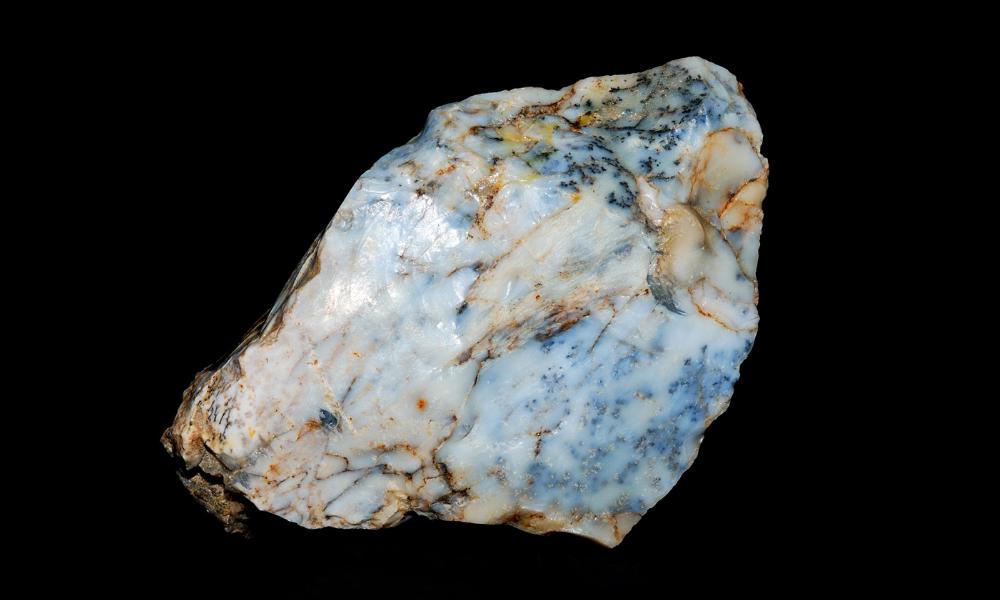
Appearance:
Dendritic opal is transparent and varies from white to beige, gray or black color or it can be completely opaque. Tree-like dendritic inclusions have been incorporated into the piece to give it a natural appearance.
Texture:
The outer surface of dendritic opal may be smooth with high-gloss polish to a rough and granular touch due to cutting and polishing.
Formation:
Dendritic opal is developed on volcanic rocks, especially in rock-fissure filling or in high-silica rocks. These dendritic patterns are developed quite evidently from the growth of such minerals as iron or manganese minerals within the body of opal.
Origins and Formation

Dendritic opal that formed through the deposition of the silica surrounds other minerals in the mineral-rich environment. It is mostly encountered near volcanic areas and areas of silica-rich waters that have penetrated the openings in the rocks which are then filled with opal. As it turns out, as the opal solidifies and after the deposition from the solution the surrounding rocks introduce minerals that form dendritic patterns.
The term ‘dendrite’ is derived from ‘dendritēs’, meaning tree-like in Ancient Greek from ‘dendron’, meaning tree in English The term ‘opal’ is from ‘opallus’, a Latin word which essentially means ‘precious stone’ and ‘opallios’ meaning ‘to see a change in color’ in Ancient Greek.
The initial identification of dendritic opal was made in the 19th century when German geologist Johannes Menge identified the first common opals in Australia around 1849.
In homes and gardens all over the world, the fame of the stone grew as miners exposed great opal deposits in Australia. This precious stone was used by the royal families and the common man alike and due to this Australia is the largest producer of opals in the present world.
Dendritic opal is not commonly found nowadays in the same locations that were prevalently mining the gemstone some decades ago.
Dendritic opal is a gemstone that is relatively easy to mine and is found in mines in all corners of the earth, but the stones themselves originate mainly from Australia. Other significant producers are Mexico and the USA; although from Virgin Valley in Nevada exhibits only a few neon green colors when fluoresced.
Geological Formation:
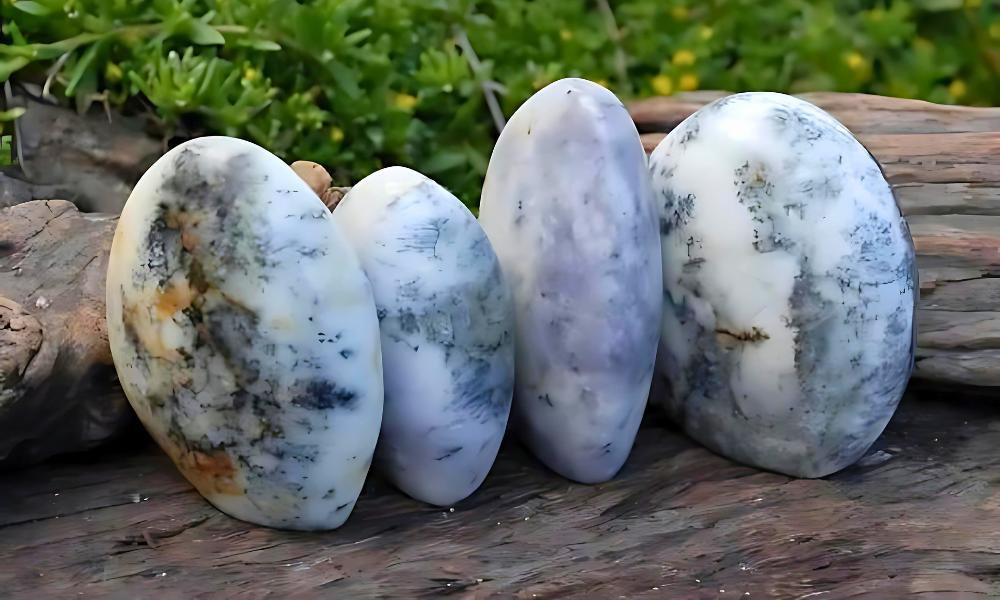
Volcanic Activity:
The vast majority of dendritic opal is not found in areas of geological activity with the presence of volcanos in the western U.S.A., Mexico, and Australia.
Silica Deposition:
The opal is created by precipitation of silica-rich solutions which come to fill the centers of volcanic rocks and the dendritic patterns are created when other minerals combine with the silicon.
Types of Dendritic Opal
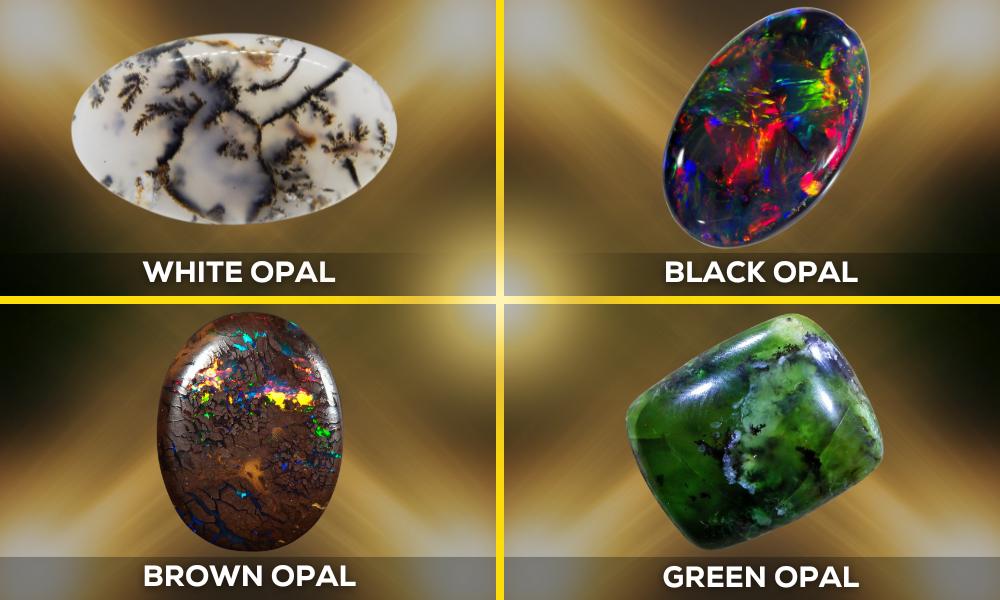
Dendritic opal comes in various types and colors, each with its own unique characteristics and appeal:
White Dendritic Opal:
Usually, it is silvery white to pale cream and has a branching network, resembling frost or lichen. It is appreciated greatly because of its refined appearance and transparency.
Black Dendritic Opal:
This type has a dark background, which has shades that can range from dark grey to black and has dendritic patterns. Even the background is black which makes the opal look deep and beautiful having such patterns delineated.
Brown Dendritic Opal:
Known as ‘fire opal’, this opal is light to dark brown and has an amazing play of rich, earthy dendritic patterns. They are common in clothes and accessories associated with the countryside and so are frequently used in jewelry.
Green Dendritic Opal:
Ranked at the bottom in frequency of occurrence, green dendritic opal has an incidence of green that ranges from pastel to dark green. Green is the primary apparent color with dendritic inclusions also looks appealing to the sight.
Uses of Dendritic Opal

Dendritic opal is versatile and can be used in a variety of applications:
Jewelry:
That is why dendritic opal has so many admirers and is often used in jewelry because of its individual patterns and colorings. From it, relatively intricate pieces of pieces of jewelry such as rings, pendants, earrings, and bracelets can be created. Because the stone has such a gorgeous appearance, it is commonly used in rather plain and sleek styles to draw attention to the stone’s grain.
Collecting:
Dendritic opal is highly valued for its appearance and rarity and that is why so many collectors want to get it. It is frequently cut as domed cabochons, or used in mineralogical exhibits.
Decorative Items:
In addition to jewelry, the dendritic opal can also be used as carving, inlay, and for ornaments that are used in arts such as carving, and inlay.
How to Care for Dendritic Opal
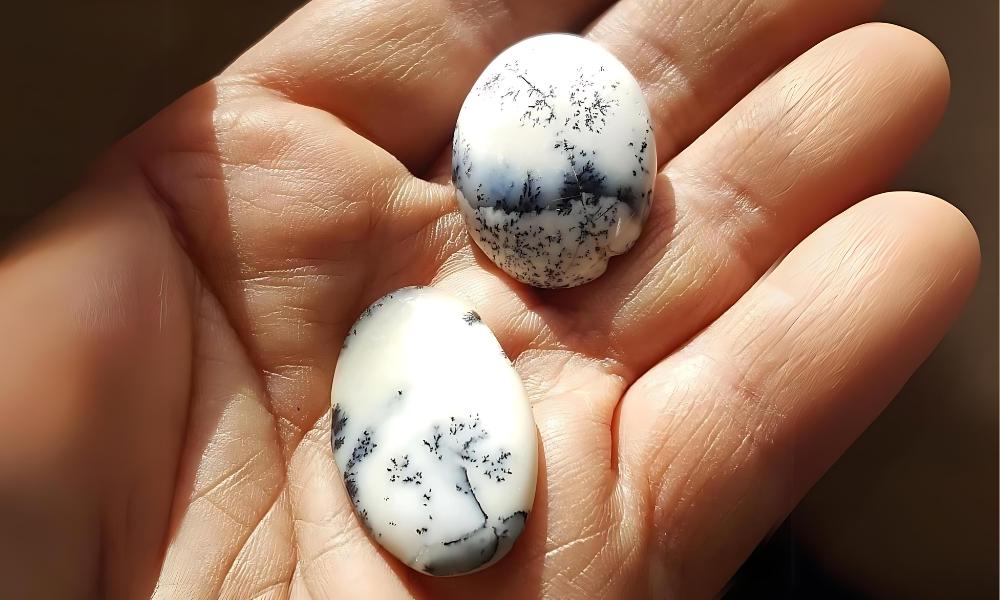
Dendritic opal is easy to care for but requires some basic tips for its maintenance These are:
It is therefore noble to establish that dendritic opal requires proper care and maintenance so as to be maintained in its natural state. Here are some tips to ensure its longevity:
Cleaning:
It is recommended that dendritic opal is cleaned with a gentle soft brush and a mixture of mild soap and water. Do not use acid or abrasive cleaners or even an ultrasonic cleaner since the stone can be harmed.
Storage:
Keep dendritic opal in a different jewelry box from other precious stones and pieces of jewelry to avoid it to be scratched. Store it in a soft cloth or pouch to avoid it getting scratched.
Handling:
Dendritic opal should also not be exposed to heat or direct sunlight including sunlight to reduce or delay the formation of layers they have attributed to.
How To Tell If Dendritic Opal Is Real?
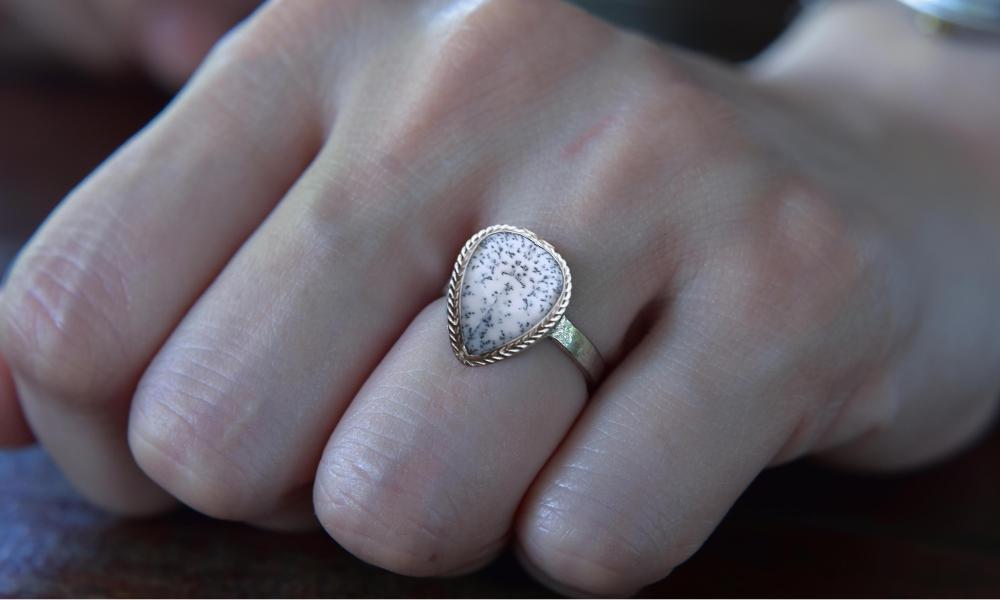
There is one test that may help to define the authenticity of dendritic opal and it is the structure itself with dendrites looking like microfern or micro tree. These opal fakes will be characterized by poorly defined and unequal branching patterns within the given piece of opal stone.
Unlike primary earth gems, collectors take factors such as intensity of color, transparency or clarity, size and into consideration when considering the value of dendritic opals. These specimens tend to be very large stones with bright colors and very clear dendrite patterns, and these are the stones that collectors prize most.
Please do not hesitate to read another buying guide and valuation of opals which we have prepared to assist you in making the right choices when it comes to buying opal gemstones for your collections or as gemstones insets.
Some Interesting Facts on Dendritic Opal
Dendritic opal is believed to have some qualities that relate it to growth, prosperity, and nature. The shear patterns illustrate it, as trees are often associated with stability, and anchoring among other things.
Historically, people considered opal stones to have magical powers and this made them be incorporated into charms and spells. Dendritic opal was believed to have fascinating patterns found in nature and it used to symbolize protection and fortune.
Dendritic opal is still relatively unknown, today it enjoys an increasing popularity among lovers of precious and semiprecious stones, due to the exceptional appearance of the specimen and the natural beauty of dendritic patterns.
As for the patrons of the October birth, the dendritic opal might interest you as an earthy variety of the opal, which is a traditional birthstone for those born in this month. Bibliographically, belongs to the solar μ-stone of the day and thus corresponds to the lucky stone for Leo.
In the past, dendritic opal was associated with the powers of magic and authority, pertinently, the spiritual meaning. During medieval times, people believed that these stones had some sort of energy that would enable the holder to look at his or her soul. Nobles used them in order to provide arguments of a status, they also believed that the stone would let them maintain that position indefinitely.
The people who studied or participated in witchcraft were often of the opinion that opals were powerful and could be used to improve spells or powers; the owners of the opal always carried it on the person or employed it in rituals.
Currently, these opals are used in New Age fashion and spirituality; the dark lines scrolling across the opal’s surface, standing out against the white base, symbolize the dualities of life — or yin and yang. Third, their mimicry of the patterns of nature refers to one’s ties to the planet and can help with the development of intuition and reflection.
Metaphysical Qualities of Dendritic Opal
Dendritic Opal is also referred to as the shaman stone in that it has some collection of magical attributes. A stone that is well-known amongst all those believers in the power of healing that crystals possess.
These are some of the metaphysical properties that have been associated with Dendritic Opal:
Astral Travel
The Brilliance of Dendritic Opal is part of the high energy of vibrations which makes it possible to have an astral projection experience out of the body, traveling to the eternal and the spiritual world and exploring the timeless dimensions. Its deeper universal energies enhance the individual’s ability to see and relate to eternal dimensions having mystic experiences.
Psychic Ability
It has a high level of energy that can allow a person to develop inherent talents and psychic powers to have magical and mystical occurrences; relive and evaluate past lives; clairvoyance, Tarot readings, Reiki, conscious travel, and other psychic abilities.
Spiritual Awakening
The name Dendritic Opal reflects this in as much as it releases energy that will cause the expansion of the individual’s spiritual awareness; therefore, comprehending the person’s karmic lessons, life purpose, and divine plan. It is advantageous to spiritual practitioners due to their spiritual development and any individual who may be experiencing a purposeless life.
Spiritual Development
This crystal stone enhancing individual authority makes the person ready for the spiritual path and the process of self-searching, which leads to confidence in the fulfillment of a purpose that harmonizes with the divine plan.
Channeling
Dendritic Opal works with deep universal energy which helps to establish the effective link with spirit and higher levels of matter, to recall, visit, and contemplate previous incarnations and the means of spiritual evolution. Clairvoyance is the communication of messages and instructions and the provision of counsel from entities such as superordinate planes and spirits, angels, fairies, and guides. The cognition and extent of the integration and also the conveyance of signals from the higher self and the spiritual tracts. The specific benefits of this crystal stone will be of immense benefit to spiritual practitioners, Reiki healers, empaths, and anyone working on their spiritual path.
Protection
It neutralizes the toxic forces, vibrations, or other negative beings that try to penetrate through the individual’s energy and Auric fields.
Karma
Everything depends on the energy of the stone and the work this marvelous stone represents, and its energy is connected to karma, the law of the spiritual cause and effect. It allows for a profound understanding of the dynamics of forces thus the assessment of solutions to past lives, spiritual inclinations, spiritual paths, or karma.
Kindness
This gemstone radiates a loving and compassionate Aura that dispels any barrier to change and transformation hence has the generic desire of love for peace, love of humanity, and the need for world change.
Past Life
It is one of the most effective spiritual stones that forms a high vibration and allows the person to recall his past life or many lives. Supplementing past life regressions is very helpful for spiritual workers, therapists, shamans, and psychics in aiding those, who want to comprehend their past life sufferings and karmic experiences.
Conclusion
Dendritic opal is one of the most beautiful and complex gemstones you’ve probably never heard of. Its special combination of formation that occurred as a result of volcanic activity, and the presence of mineral inclusion makes it remarkable and different from other categories of opal. It is employed in pieces of jewelry and appreciated for its beauty, collected as a gemstone or a specimen, remains a thing of beauty.
In light of the available types of gemstones that one is likely to come across, unveil what could be described as an artistic view of the earth. It is not just a pretty sight as it has patterns and formations that relay its message to the spectators. Dendritic opal is so wonderful, and it is high time to let it bring the grace of nature into your life in terms of collection or jewelry.
FAQs about Dendritic Opal
Q1. Is Dendritic Opal real opal?
In essence, the dendritic crystal is just a regular opal with a party trick up its sleeve. Rather than the ostentatious color play found in other opals, this dendritic rock has inclusions that resemble tiny, mossy woodlands or whimsical branches. For this reason, it’s also referred to as the “moss opal” or “mossy opal.”
Q2. What is Dendrite Opal good for?
Arguably, the most common application for dendritic opal is in spiritual healing. According to legend, the stone heightens spiritual consciousness, fostering improved intuition and comprehension of the universal forces at play. Sometimes referred to as a Shaman stone, it is excellent for those investigating clairvoyance, previous incarnations, or celestial entities.
Q3. What is another name for the Dendritic Opal?
People who are drawn to Dendritic Opals, also known as Merlinite, include healers, shamans, and magicians.
Q4. What color is dendritic opal?
Gemstones made of dendritic opal are typically found in white, pink, yellow, blue, and green hues with black inclusions. They are opaque and translucent. They have a 5-6.5 hardness level. Milk opal with dendritic inclusions that resemble ferns or moss is known as dendritic opal.
Q5. Which is the rarest opal?
The most uncommon and valuable variety of opal is black opal, which has a body tone referred to as “black” or “dark.”
Stay Tuned to Gems Tycoon for all gems-related articles.

